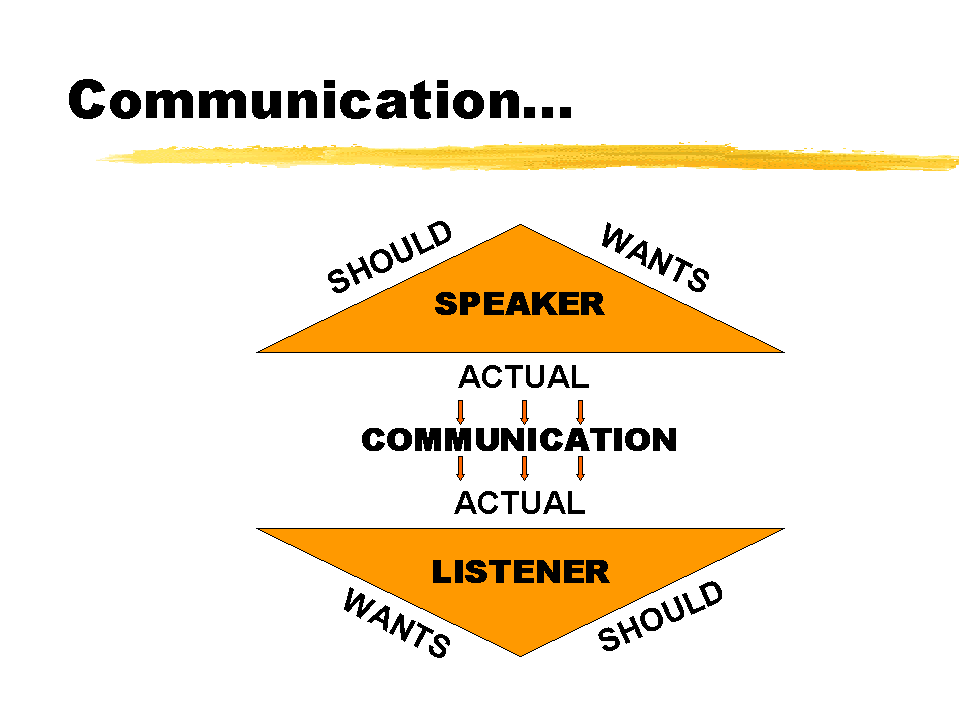

COMMUNICATION: the passing on of ideas, concepts, instructions, etc. in a manner that is understood by all concerned parties. If there is misunderstanding, communication is not successful. In a safety situation, this can lead to danger.
WHAT SPEAKER SHOULD SAY: This is very essence of what the speaker should be delivering to the listener. It might, for example, be a formula, government regulation or explicit instruction, that must not be deviated from.
WHAT SPEAKER WANTS TO SAY: This is the speaker's own understanding of what should be said, and what the speaker thinks the listener will understand.
WHAT SPEAKER ACTUALLY SAYS: This is most often affected by the environment at the point of delivery. It is very 'here and now'. Many factors can affect the integrity of the message at the actual point of delivery. EG: the emotional and psychological media surrounding the speaker: angry? Sad? Happy? Ill? Confident? Affected by drugs? Dislike of listener? The physical environment: hot? Cold? Noisy?
WHAT LISTENER ACTUALLY HEARS: Affected by such things as the mode of delivery by the Speaker. Is the speaker angry, etc.? The mechanics of the delivery is important here also. EG Noisy? Crackling phone line? Are there other distractions in the vicinity of the delivery of the message? Emotional and psychological state of listener plays a part also. EG: dislike of speaker? Influenced by drugs? Language is foreign or too technical?
WHAT LISTENER WANTS TO HEAR: The listener may have some preconceived ideas about what should be happening and be 'second-guessing' what the point of the communication is about.
WHAT LISTENER SHOULD HAVE HEARD: This equates with WHAT THE SPEAKER SHOULD HAVE SAID. With so many factors in between, how synchronised will the two be?
Welcome Page | About Us | Services | Pricing | Book of Triangles | Contact Us | Other Safety Sites